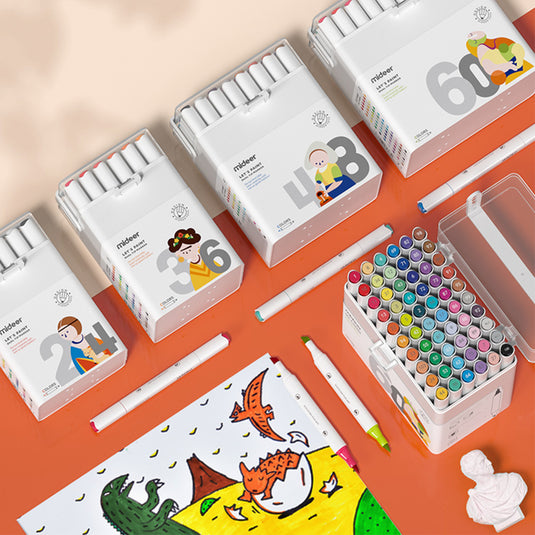Graphic design is a creative field that requires the use of various tools and materials to bring ideas to life. One such tool that has gained popularity among designers is water based markers. These markers offer a range of benefits that make them a valuable asset in the graphic design process.
Enhanced Color Blending
One of the key advantages of using water based markers in graphic design is their ability to blend colors seamlessly. The water-based ink allows for smooth transitions between different shades, creating a more vibrant and realistic look. This is particularly useful when working on illustrations or creating gradients in designs.
For example, when designing a poster for a music festival, water based markers can be used to create a colorful and dynamic background. By blending different shades of blue and green, the designer can achieve a visually appealing sky and grass effect. This level of color blending is not easily achievable with other types of markers.
Non-Toxic and Environmentally Friendly
Another significant benefit of water based markers is that they are non-toxic and environmentally friendly. Unlike solvent-based markers that contain harmful chemicals, water based markers are made from water-soluble pigments and do not emit strong odors. This makes them a safer option for both the designer and the environment.
Imagine working in a small studio space with poor ventilation. Using solvent-based markers can be unpleasant and even pose health risks due to the fumes they release. Water based markers, on the other hand, provide a more comfortable and safer working environment.
Easy to Blend and Layer
Water based markers are incredibly versatile when it comes to blending and layering. The water-soluble ink allows for easy blending of colors, creating smooth transitions and gradients. Additionally, the markers can be layered to intensify colors or create unique effects.
For instance, when designing a logo for a sports team, water based markers can be used to create a gradient effect on the team's name. By layering different shades of the team's colors, the designer can achieve a dynamic and eye-catching logo that stands out.
Suitable for Various Surfaces
Water based markers can be used on a wide range of surfaces, making them a versatile tool for graphic designers. Whether working on paper, canvas, or even wood, these markers deliver consistent and vibrant results.
For example, when designing a mural for a children's playroom, water based markers can be used to bring the design to life on the walls. The markers' ability to adhere to different surfaces ensures that the artwork remains intact and vibrant for a long time.
In conclusion, the benefits of using water based markers in graphic design are numerous. From enhanced color blending to their non-toxic nature, these markers offer a range of advantages that make them a valuable tool for designers. Their versatility and ability to work on various surfaces further contribute to their appeal. So, the next time you embark on a graphic design project, consider incorporating water based markers into your creative process for stunning and professional results.
